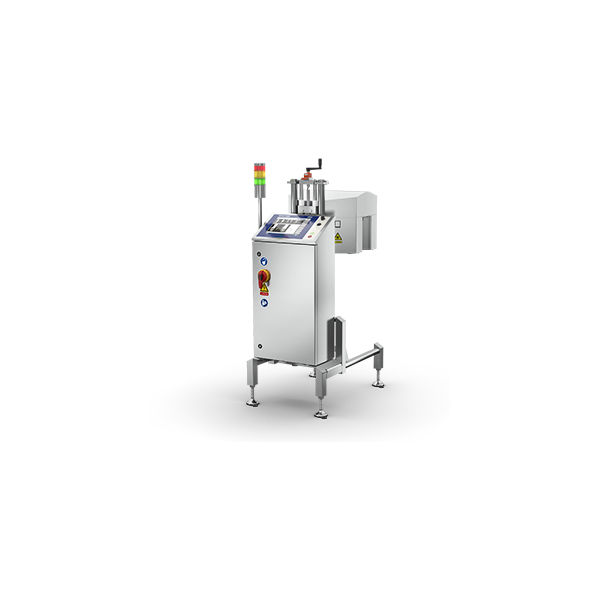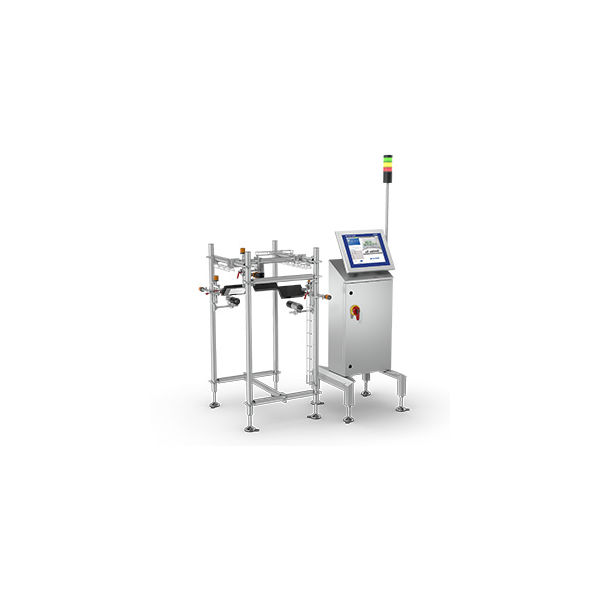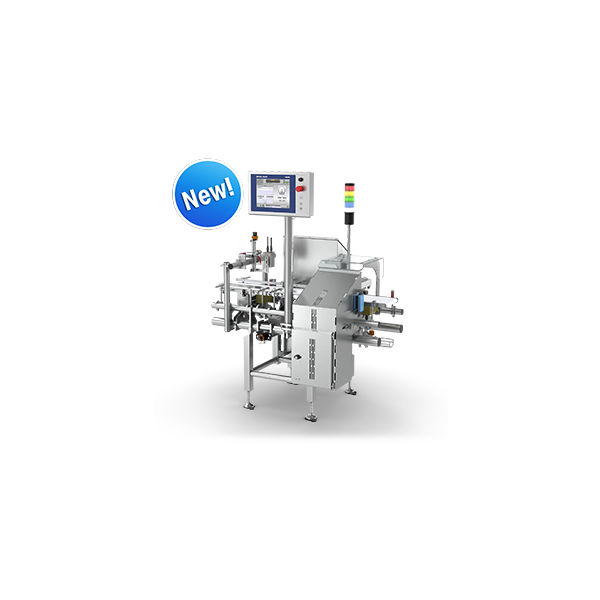
V15 Label Inspection 360° System
This space-saving solution detects label data and quality defects on round products. Six image sensors are enclosed in a compact design that can easily be installed over existing conveyors. The V15 can be extended with top and bottom cameras.

V11 Label Inspection System
This flexible label inspection solution reliably inspects oriented products from the sides or top for label data and quality defects. It can be easily integrated into existing production lines utilizing smart cameras, lighting, and software.

V31 Vision Inspection System
Advanced package and label inspection of oriented products. The flexible system includes a rapid installation frame and product tracking for support of up to six cameras and customized lighting.

V33 Flat Pack Vision Inspection System
Advanced bottom inspection of a variety of packages. The system supports customized lighting and can be extended with top cameras for further applications such as seal contamination inspection.

V13 Flatpack Label Inspection System
This solution carries out reliable label inspection from the bottom up to inspect labels on the underside of flat packs. The stand-alone solution offers configurable material handling options and can be extended with top and side smart cameras.

CV Combination
This fully integrated system offers weight control and completeness check combined with label inspection for all product shapes. The space-saving solution is fully configurable from standardized modules and offers advanced quality control.
Maximize Your Return on Investment with Professional Service Solutions
Maximize Your Return on Investment with Professional Service Solutions
New Remote Support
Keeping Your Production Running
In addition to our existing 24/7 technical phone support, we offer the latest in remote service support using Augmented Reality (AR) technology. This allows us to provide the quick expert support you need to achieve your productivity goals.
Our METTLER TOLEDO augmented reality-powered visual remote assistance solution helps us to fully understand your service issues. Using a mobile device with an integrated camera enables us to see exactly what you see. We can guide you step-by-step to resolve the issue by providing real-time contextual assistance, such as adding text, drawings, or highlighting objects with 3D markers. Benefit from the fastest fault diagnostics, repair, and part replacement support by using the latest technology. We can also remotely connect to some of our products for additional service enhancement. Please contact your local service team for more details.
Explore our Services
Uptime. Support & Repair
Performance. Maintenance & Optimization
Compliance. Calibration & Quality
Expertise. Training & Consulting
FAQs
What is the difference between an OCV system and an OCR system?
Optical Character Recognition (OCR) is a method for identifying printed characters on a package surface. OCR is ideal for variable text fields, where it may not be possible to know what text string will be on the production line. The tool compares a given character image against all the characters in a pre-defined font to find the closest match.
Optical Character Verification (OCV), on the other hand, is looking for a pre-defined value – it is used to check for the accuracy of a code rather than determine what a code is.
OCV and OCR technology can be used in manufacturing facilities for quality checks - for example, as part of a product inspection program that includes package data quality inspection in the food and beverage industry. Machine vision inspection manufacturers such as METTLER TOLEDO CI-Vision offer vision inspection systems with OCV and OCR capabilities for printed data and code verification requirements.
Can OCV systems from METTLER TOLEDO handle variations in label materials or printing processes?
METTLER TOLEDO OCV systems are designed for versatility. They have the flexibility handle the diverse materials and printing methods encountered in real-world production lines. They can be configured to account for variations in label materials, such as the reflectivity of glossy labels or the texture of shrink wrap sleeves. Additionally, the systems can be programmed to accommodate different printing processes, whether it's inkjet, laser, or thermal printing, for consistent and reliable label data inspection every time.
Can OCV systems be used to collect data for label optimization?
Yes, OCV systems can be a valuable tool for data collection. By analyzing the types of label defects that are detected during production, recurring issues can be quickly identified, and labeling processes can be adjusted and optimized to minimize future errors. This data-driven approach can lead to cost savings, boosted productivity, and improved label quality.
Do OCV systems offer multi-language capabilities for label inspection?
Our OCV systems feature advanced character recognition software. This allows them to recognize and inspect labels with text in any language, catering to a globalized market and providing accurate inspection regardless of the language used.












